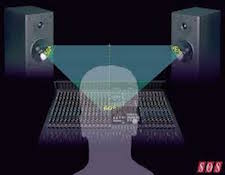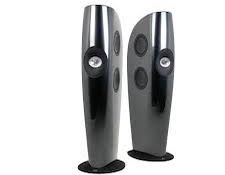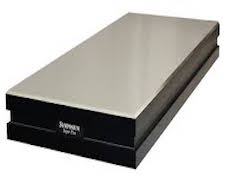It’s the time of year for saving money!
Setting up an audio system may be a frustratingly difficult thing to do and do well. Perhaps one of the more trying, and possibly the most difficult set up procedure revolves around a phono cartridge. Mounting a cartridge is an exercise in patience. Making one adjustment holds the very real possibility of changing a previous adjustment. If so, you sit there in absolute frustration because it “just won’t work right.” And the process begins again.
 Perhaps second to a cartridge is speaker placement. Because virtually no two rooms that house an audio system are alike, no two placements are alike, at least not dimensionally. It would be so easy if for every audio system in every room the speakers could be placed to the exact same dimensions and whammo, perfect sound. Sadly, however, it just doesn’t work that way.
Perhaps second to a cartridge is speaker placement. Because virtually no two rooms that house an audio system are alike, no two placements are alike, at least not dimensionally. It would be so easy if for every audio system in every room the speakers could be placed to the exact same dimensions and whammo, perfect sound. Sadly, however, it just doesn’t work that way.
About nine months ago, after reading Dennis Foley’s article on speaker placement, I set about using those same techniques to position my speakers. After doing so as best I could given room constraints, I experienced imaging unlike any I had ever heard on my system. I decided I would leave well enough alone, leave the speaker placement alone, and enjoy the improved sonics.
Then, a few weeks ago, something puzzling happened. I was listening to music on a Wednesday evening, one of those nights when TV offered absolutely nothing I found interesting. I had turned off the TV and turned on the system. Music seemed the perfect answer.
As I sat listening things were definitely different. That wonderful imaging suddenly wasn’t so wonderful. I had a strong center image, which I’ve always had. But the sound that I remembered as basically wrapping around me from both sides didn’t wrap any more.
 In fact, it sounded like the mids and highs left the Blade’s Uni-Q drivers in a narrow focused beam projected straight at me like lasers boring holes in my brain. Clearly, this didn’t seem right. And it was absolutely, profoundly different than what I had remembered from before.
In fact, it sounded like the mids and highs left the Blade’s Uni-Q drivers in a narrow focused beam projected straight at me like lasers boring holes in my brain. Clearly, this didn’t seem right. And it was absolutely, profoundly different than what I had remembered from before.
I decided I was just hearing things and rather than paying detailed attention to how I was hearing I should just enjoy what I was hearing. I chalked it up to the likelihood that my ears / brain were playing tricks on me. Three songs later I decided it must be the music. Three songs after that, begrudgingly, I got up to retrieve the steel tape measure, the digital measuring device, and set about checking what I already knew, my speaker placement was wrong. Again.
Two minutes later told me all I needed to know. This didn’t make sense. I certainly didn’t move them. I don’t have a dog that may have bumped into them. The lady that cleans my house is remarkably careful around my system so I knew she wasn’t responsible. So how did they get moved? No one that comes and goes in my home would have any reason to move those speakers. But moved they were.
When I last positioned the Blades, I did so by myself. Moving a 5-1/2 foot tall, 130-pound speaker and doing so to extremely precise measurements in multiple directions, with both speakers matching dimensionally, can be a challenge. First, the Blades are narrow from side to side and top heavy. If you move them from the top to increase stability, you loose placement precision. If you move them from the bottom to increase placement precision, you run the risk of toppling them over. What a bad thing that would be. Waiting on a time when I could recruit a friend to help me wasn’t a viable option. I wanted the placement corrected then and there.
 A few months back, I added a set of Symposium Super Plus Platforms under my speakers. Aside from the remarkable improvements they made sonically, the other wonderful benefit they bring is moving the speakers. I am using the factory spikes on the Blades and have them sitting on flat metal discs to protect the top of the platforms. So not only can I move the speaker on the platform, I can also easily slide the entire platform on the carpet. Score one for convenience.
A few months back, I added a set of Symposium Super Plus Platforms under my speakers. Aside from the remarkable improvements they made sonically, the other wonderful benefit they bring is moving the speakers. I am using the factory spikes on the Blades and have them sitting on flat metal discs to protect the top of the platforms. So not only can I move the speaker on the platform, I can also easily slide the entire platform on the carpet. Score one for convenience.
As I discovered before, adjusting the Blades is at best a challenge. There are not many flat surfaces to use as a reference. I also found it difficult to hold the tape measure out to measure the distance from the sweet spot to the Uni-Q driver. Of course the tape kept falling. Using the laser wasn’t much easier as holding it next to my ear, shining the dot on the Uni-Q and pressing the button inevitably moved the whole thing. I finally figured out how to take a repeatable measurement and eventually was able to get the placement back in its proper place.
Amazing. My first thought when I resumed playing music was amazing. Here was the imaging I had lost. Most surprising of all, I was only off about an inch on the side dimensions and less than an inch on the back. It seems almost counterintuitive that such minute adjustments in distance bring about so profound a change. That, however, was exactly the result. As most audiophiles know, that’s just how you roll when it comes to speaker placement.
As I sat there listening, both amazed and relieved, I realized that in the future I needed to trust my ears. I made the incorrect assumption that because the speakers shouldn’t have been moved, they hadn’t. I ignored what my sense of hearing was glaringly telling me in favor of a belief structure that was ultimately found flawed. I was also very glad I had a placement system that I knew worked for me, in my home, on my system. That enabled a fairly easy remedy.
Hopefully, all audiophiles have the same.





